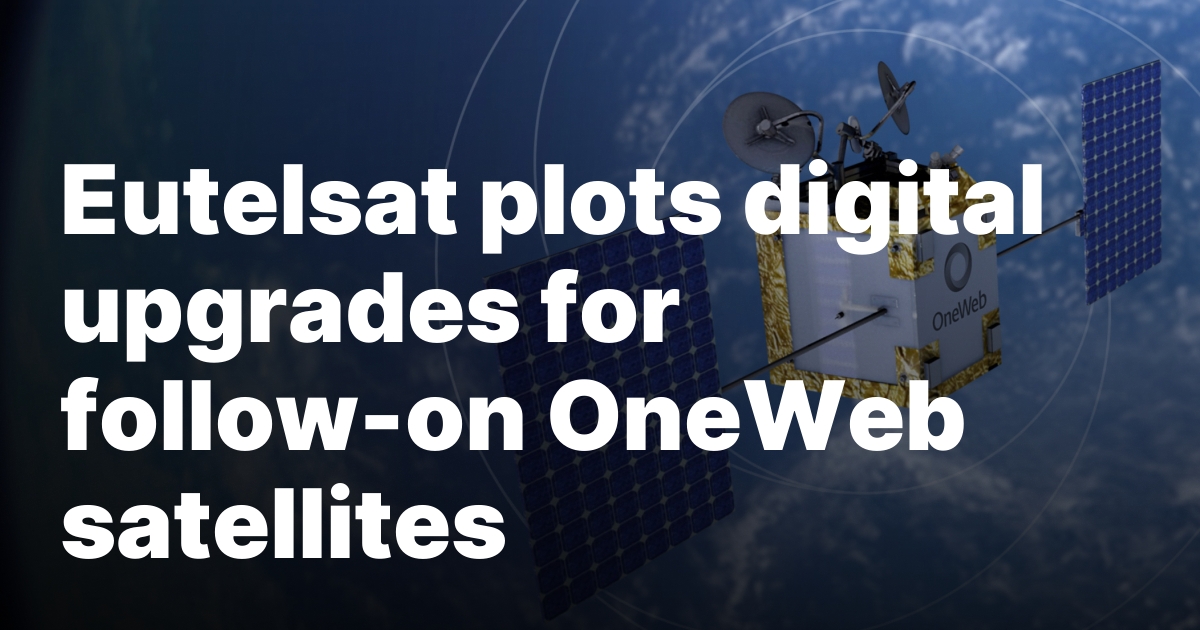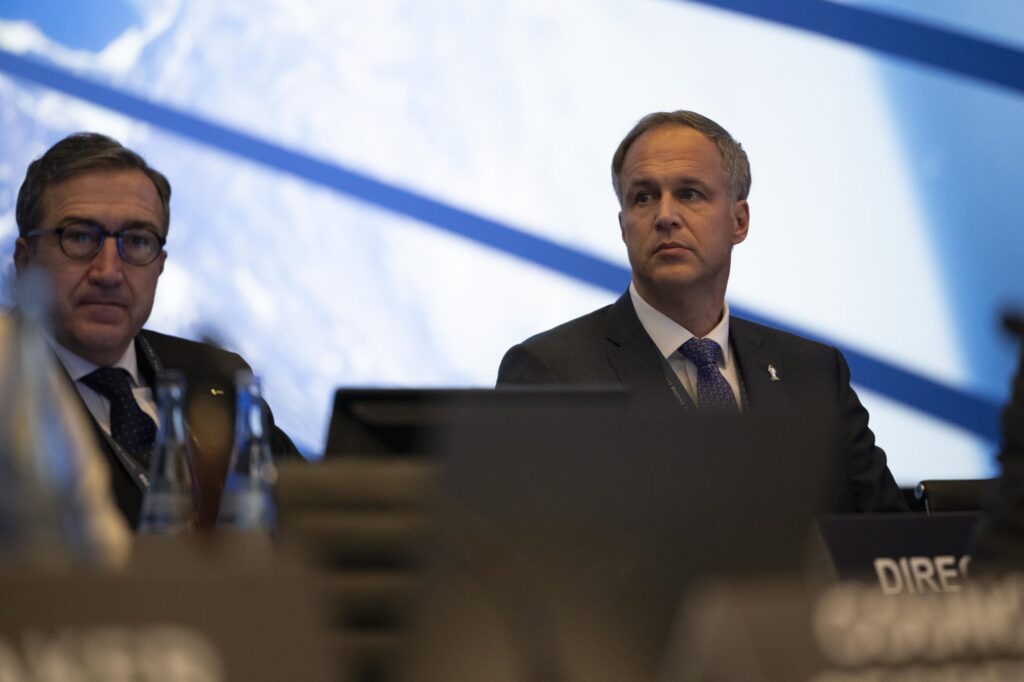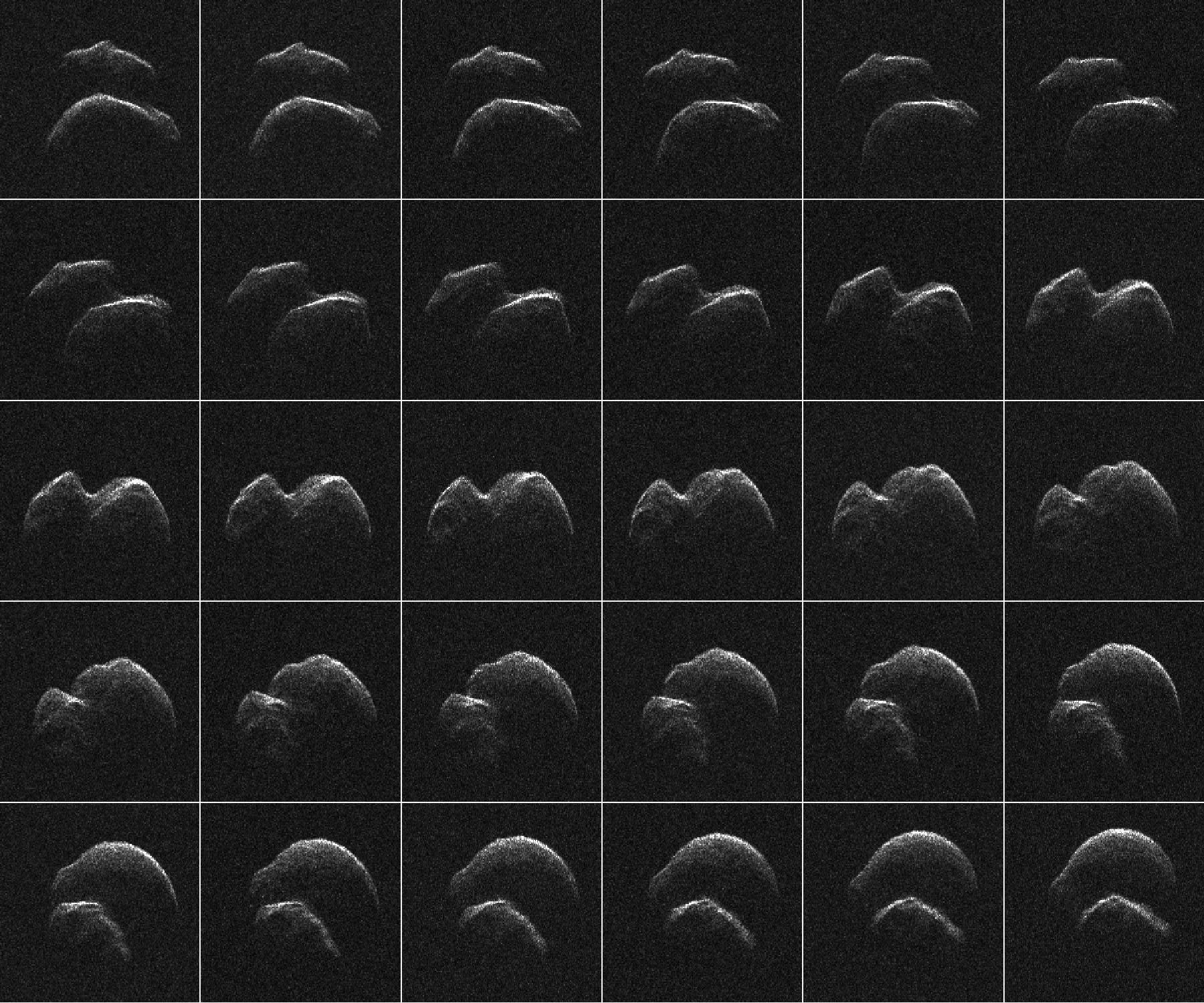Now Reading: Eutelsat plots digital upgrades for follow-on OneWeb satellites
-
01
Eutelsat plots digital upgrades for follow-on OneWeb satellites
Eutelsat plots digital upgrades for follow-on OneWeb satellites

TAMPA, Fla. — Space computing specialist Ramon.Space announced a deal May 14 to supply digital communication channelizer systems for at least 70 upcoming OneWeb satellites, helping transition the constellation to a software-defined network that can be updated in orbit.
The California-based company plans to start delivering its signal routing technology in the coming months to Toulouse, France, where Airbus is building an initial 100 follow-on spacecraft for OneWeb’s French parent company, Eutelsat. Launches are scheduled to begin at the end of 2026.
OneWeb’s current constellation of 654 low Earth orbit (LEO) satellites uses analog channelizers to sort and direct data traffic, relying on hardware that must be configured before launch and cannot be adapted once in space.
Avi Shabtai, CEO of Ramon.Space, said its onboard processors will allow OneWeb to better respond to shifting market demands and ensure greater compatibility with Eutelsat’s geostationary fleet and IRIS², Europe’s sovereign multi-orbit broadband constellation slated to enter service in 2031.
Digitizing signal processing will also be key to introducing advanced network management tools powered by artificial intelligence, Shabtai said, though he declined to elaborate on specific applications.
Fabien Vernat, Eutelsat’s replenishment program manager for OneWeb, said the technology will help the operator maintain existing services while paving the way for more advanced, next-generation capabilities.
While financial terms were not disclosed, Shabtai described the deal as one of Ramon.Space’s largest to date, with the potential to expand to cover more satellites.
Eutelsat has outlined plans to invest up to 2.2 billion euros ($2.5 billion) to deploy the 440 satellites needed to sustain the OneWeb constellation until IRIS² comes online. The French operator has also committed around 2 billion euros to its share of the IRIS² public-private partnership.
The move toward software-defined satellites reflects a broader industry shift toward greater in-orbit flexibility. SpaceX has also equipped its Starlink LEO network with software-defined radios to adjust coverage and manage capacity dynamically.
Stay Informed With the Latest & Most Important News
-
 012024 in Review: Highlights from NASA in Silicon Valley
012024 in Review: Highlights from NASA in Silicon Valley -
 02Panasonic Leica Summilux DG 15mm f/1.7 ASPH review
02Panasonic Leica Summilux DG 15mm f/1.7 ASPH review -
 03How New NASA, India Earth Satellite NISAR Will See Earth
03How New NASA, India Earth Satellite NISAR Will See Earth -
 04And Thus Begins A New Year For Life On Earth
04And Thus Begins A New Year For Life On Earth -
 05Astronomy Activation Ambassadors: A New Era
05Astronomy Activation Ambassadors: A New Era -
06SpaceX launch surge helps set new global launch record in 2024
-
 07Space Force plans new ‘Futures Command’ amid pressure to speed up modernization
07Space Force plans new ‘Futures Command’ amid pressure to speed up modernization




















